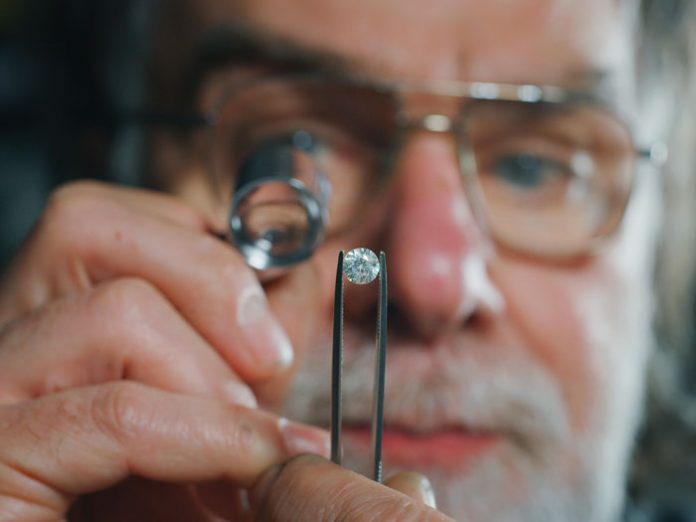For the purpose of this article, I needed to poll a number of women about their diamond preferences.
In the past, we had only two choices when it came to diamond jewelry: the real thing, mined from the ground, very expensive and meant to last forever, or the fake, synthetic gems like cubic zirconia (which are actually quite good).
Now, however, there’s a new option on the market: labratory-grown diamonds. Lab diamonds are identical to mined diamonds in every way. They’re real diamonds, except that instead of being extracted from the ground, they’re grown in a lab where the same conditions have been duplicated. Both lab and mined diamonds are genuine, with the same chemical composition, hardness and shine factor. They are also both made entirely of carbon. Cubic zirconia has zero carbon, and nothing chemically in common with real diamonds.
What is the difference between mined and laboratory-grown diamonds? Well, first there’s the price. Lab diamonds cost 20-30% less than mined diamonds…and the price difference increases as the stone gets larger. Lab diamonds don’t have imperfections like most mined diamonds do. Because they’re all perfect, the pricing is consistent. You want a carat, you pay one price, you want two, you pay another. Those pretty pink diamonds that were always exorbitant are also more accessible when they come from a lab, as the lab is able to recreate the conditions that make it pink. The downside is resale value. You can sell real diamonds pretty easily and they’ll always retain their value. Lab diamonds are too new to know how the value will hold up long term.
Are you starting to think about that tennis bracelet you never thought would be in reach?
I asked a group of friends for opinions—and they were diverse:
“Personally, I wouldn’t care. I already wear fake diamonds. But the fact that I could buy something real and it would be cheaper is very appealing.”
“I think that if I were getting engaged, I would care. But now that I’m older and wiser, I don’t think it matters.”
“Really? I think the opposite. I know that I’m going to have my engagement ring forever. But what about the pieces I might want to resell? I want to make sure that they retain their value. What if I want to upgrade my eternity band for a bigger one when I reach a big anniversary?”
“A diamond is all about the value, and lab diamonds don’t have it. How could you say they’re acceptable? If it’s not a valuable stone, you might as well get cubic zirconia.”
“They are valuable, just a little less so. I’m a tall girl, so I had asked my chasan for a larger stone with imperfections instead of a smaller, perfect one. That would suit me better. I don’t see how this is any different. It has a chisaron, but sometimes we sacrifice quality for quantity.”
“It depends. For a random pair of earrings, I don’t think I’d care. But if I were buying a ring for a kallah, I’d still want to be able to choose the setting. If my jeweler could offer me both options in the same style setting, I’d probably give the kallah a choice: You can have X number of carats of this type or Y number of carats of that type. But if I couldn’t have that custom experience, I’d pass.”
Are you all forming your own opinions by now? Which of these women think like you do? Would you like some more information?
First, Some History
The science of laboratory-grown diamonds has been evolving for a century, but the idea of being able to do it has been on the minds of scientists since the 1800s. Ever since it was discovered that diamonds consist of pure carbon, people have been trying to heat charcoal while simultaneously subjecting it to high pressure, hoping that their efforts will pay off. In 1894, science fiction writer H.G. Wells published a short story about a businessman who made it his life’s goal to create diamonds.





















